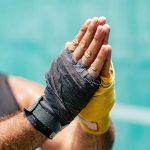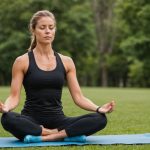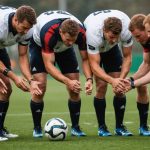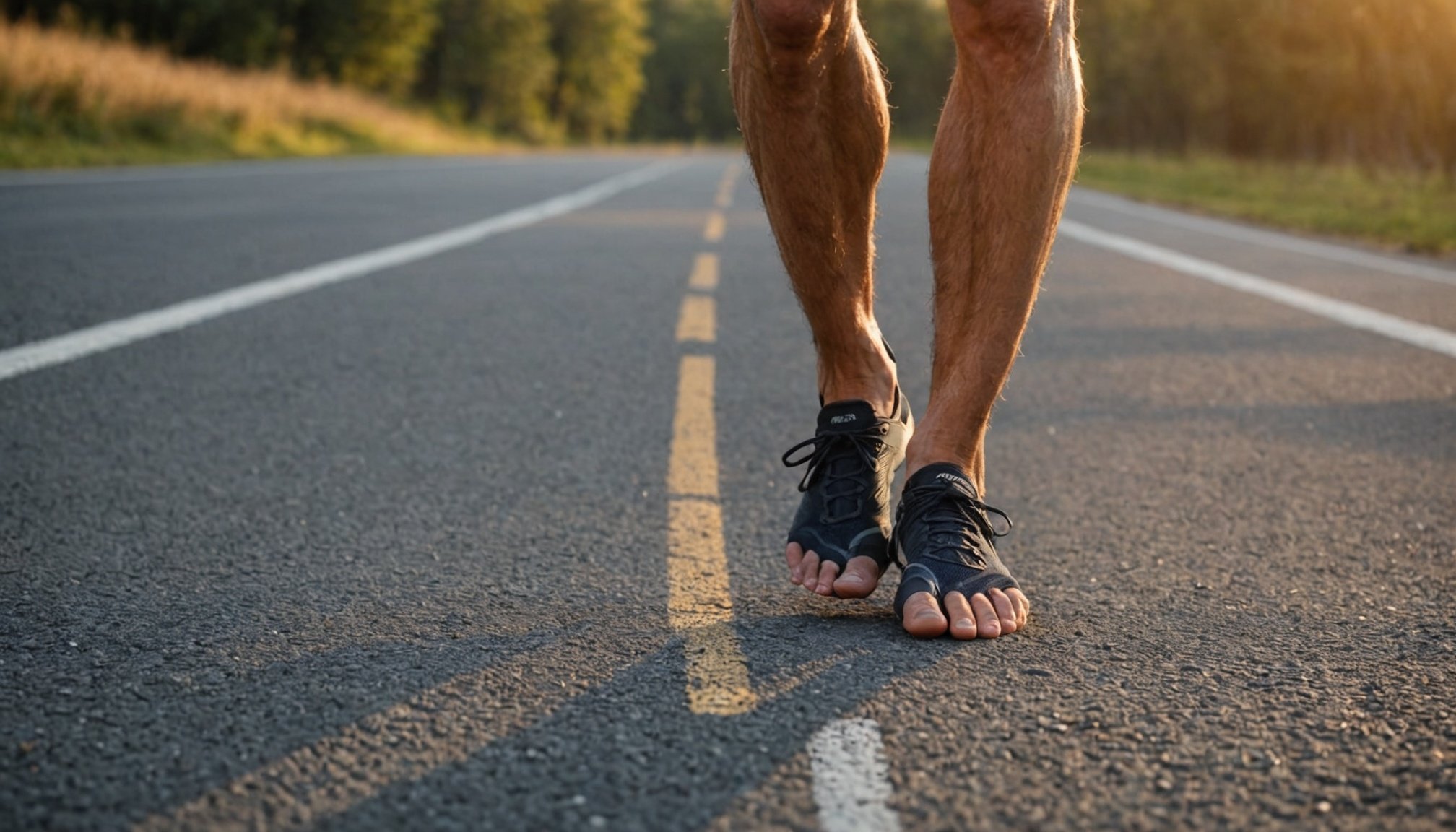Unlocking the Biomechanical Advantages of Barefoot Running: Discover the Benefits for Your Feet and Performance
What is Barefoot Running?
Barefoot running, or running in minimalist or barefoot shoes, has gained significant attention in recent years due to its potential to improve running form, reduce injury risk, and enhance overall foot health. At its core, barefoot running involves mimicking the natural movement and mechanics of the foot as if you were running without any shoes at all.
“Barefoot shoes are designed to mimic the natural shape and movement of the foot, allowing for a more natural and unrestricted gait,” explains Adam Husler, a specialist in foot biomechanics.
Also to read : Unlocking Recovery: The Impact of Sports Psychology on Healing from Athletic Injuries
When you run barefoot or in minimalist shoes, your foot is allowed to move more naturally, which can lead to a more efficient running form. This natural movement engages the foot muscles more effectively, strengthening them over time.
The Science Behind Barefoot Running
To understand the benefits of barefoot running, it’s essential to delve into the science behind it. Here are some key points:
In the same genre : How can you effectively use foam rolling for muscle recovery?
Foot Mechanics and Heel Drop
Traditional running shoes often have a significant heel drop, which is the difference in height between the heel and the forefoot of the shoe. This can alter the natural running form by encouraging a heel strike rather than a midfoot or forefoot strike. In contrast, barefoot running or using minimalist shoes reduces this heel drop, promoting a more natural running form.
“Shoes with a high heel drop can offer benefits such as increased cushioning and support for long-distance runners, but they can also lead to an unnatural running form and increased risk of injuries,” notes a study on sports biomechanics.
Sensory Feedback
One of the critical advantages of barefoot running is the enhanced sensory feedback it provides. When you run barefoot or in minimalist shoes, your feet receive more sensory input from the ground, which helps in adjusting your running form and reducing the impact on your joints.
Muscle Strength and Activation
Barefoot running strengthens the muscles in your feet, ankles, and legs. By engaging these muscles more naturally, you build strength and stability that can reduce the risk of injuries.
Pros and Cons of Barefoot Running
Like any training method, barefoot running has its pros and cons. Here’s a detailed look:
Pros:
- Improved Running Form: Barefoot running encourages a midfoot or forefoot strike, which can reduce the impact on your joints compared to heel striking.
- Increased Foot Strength: The natural movement and engagement of foot muscles help in building strength and stability.
- Enhanced Sensory Feedback: More sensory input from the ground helps in adjusting your running form and reducing injury risk.
- Reduced Injury Risk: By promoting a more natural running form and strengthening foot muscles, barefoot running can reduce the risk of common running injuries like plantar fasciitis and Achilles tendonitis.
Cons:
- Transition Period: Switching from traditional shoes to barefoot or minimalist shoes can be challenging and may require a gradual transition period to avoid injuries.
- Increased Risk of Initial Injuries: The initial transition can lead to injuries such as foot pain or ankle sprains if not done carefully.
- Limited Protection: Barefoot shoes offer less protection against sharp objects or extreme temperatures.
Practical Tips for Transitioning to Barefoot Running
If you’re interested in trying barefoot running, here are some practical tips to help you transition smoothly:
Start Slow
- Begin by walking barefoot or in minimalist shoes for short distances to allow your feet to adapt.
- Gradually increase the distance and intensity over weeks.
Choose the Right Shoes
- Opt for minimalist shoes that mimic the natural shape and movement of the foot.
- Look for shoes with minimal heel drop and sufficient room for your toes to spread.
Listen to Your Body
- Pay attention to any pain or discomfort and adjust your training accordingly.
- If you experience pain, reduce the intensity and give your body time to recover.
Incorporate Strengthening Exercises
- Include exercises that strengthen your foot muscles, such as toe curls and heel raises.
- Strengthen your ankles and legs through exercises like calf raises and single-leg squats.
Real-Life Examples and Anecdotes
Many runners have seen significant improvements in their performance and foot health after transitioning to barefoot running. Here’s an example:
Erik Semling, a young and accomplished runner, emphasizes the importance of natural running form and recovery. In an interview, he mentioned how focusing on proper running form and using minimalist shoes helped him become faster and less injury-prone.
Comparative Analysis: Traditional vs. Minimalist Shoes
Here is a comparative table highlighting the key differences between traditional running shoes and minimalist or barefoot shoes:
| Feature | Traditional Running Shoes | Minimalist/Barefoot Shoes |
|---|---|---|
| Heel Drop | High (often 10-12 mm) | Low (often 0-4 mm) |
| Cushioning | High | Minimal |
| Support | High | Minimal |
| Running Form | Encourages heel strike | Encourages midfoot/forefoot strike |
| Foot Muscle Engagement | Limited | High |
| Sensory Feedback | Limited | High |
| Injury Risk | Higher risk of joint injuries | Lower risk of joint injuries |
| Transition Period | Not applicable | Required |
Barefoot running is not just a trend; it is a scientifically-backed approach to improving your running form, reducing injury risk, and enhancing overall foot health. By understanding the biomechanical advantages and following practical tips for transitioning, you can unlock the full potential of your feet and body.
As you embark on this journey, remember that patience and gradual transition are key. Listen to your body, incorporate strengthening exercises, and enjoy the natural movement and sensory feedback that barefoot running provides.
In the words of Adam Husler, “Allowing your foot to move naturally and unrestricted can lead to a more efficient and healthier running experience.” So, take the first step towards a more natural, stronger, and healthier you – one step at a time.











